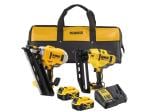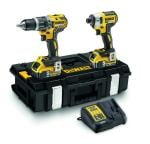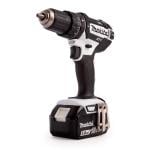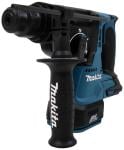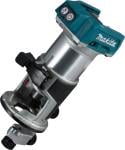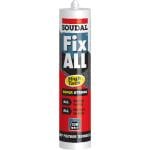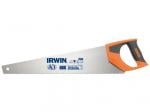How to Use a Torque Wrench
Whether you're a professional mechanic, a DIY enthusiast, or someone seeking precision in fastening, this guide will equip you with the knowledge and expertise to achieve accurate and reliable results. Get ready to unleash the full potential of your torque wrench and ensure the safety and longevity of your projects. Let's dive in!
What is a Torque Wrench?
A torque wrench is a specialized tool used to apply a specific amount of torque (rotational force) to fasteners, such as nuts and bolts. It ensures that fasteners are tightened to the manufacturer's recommended specifications, preventing over-tightening or under-tightening, which could lead to equipment failure or safety hazards.
Importance of Using a Torque Wrench
Using a torque wrench is critical to achieving uniform and accurate fastening in a wide range of applications. Whether it's automotive repair, machinery assembly, or construction projects, proper torque application ensures the integrity and longevity of the fastened components.
Benefits of Proper Torque Application
Accurate torque application offers several advantages, including:
- Enhanced Safety: Properly torqued fasteners reduce the risk of parts coming loose during operation, preventing accidents and injuries.
- Component Longevity: Over-tightening can damage threads and weaken fasteners, while under-tightening can cause parts to become loose. Correct torque application extends the lifespan of components.
- Consistent Performance: Uniform torque application ensures consistent performance and efficiency in machines and equipment.
- Compliance with Specifications: Following the manufacturer's torque specifications ensures that warranties remain valid and product performance meets standards.
Types of Torque Wrenches
Torque wrenches come in various types, each offering unique features and applications:
Click-Type Torque Wrench
The click-type torque wrench is the most common and user-friendly type. It emits an audible "click" sound when the desired torque is reached, alerting the user to stop applying force. This type is suitable for a wide range of projects and is ideal for beginners.
Beam-Type Torque Wrench
The beam-type torque wrench uses a calibrated beam to indicate the applied torque. As the wrench is tightened, the beam deflects, providing a visual indication of the torque value. This type is straightforward and durable, suitable for occasional use.
Digital Torque Wrench
The digital torque wrench features an electronic display that shows the applied torque value precisely. Some models may even have additional features, such as memory storage and programmable settings. Digital torque wrenches are ideal for high-precision tasks.
Understanding Torque and its Measurement
Before diving into using a torque wrench, it's essential to understand the concept of torque and how it is measured.
What is Torque?
Torque is a rotational force that causes an object to rotate around an axis. In the context of fasteners, torque refers to the force applied to a nut or bolt to create tension and hold two or more components together securely.
Units of Torque Measurement (ft-lb, Nm)
Torque is typically measured in two units: foot-pounds (ft-lb) and Newton-meters (Nm). Foot-pounds are commonly used in the United States, while Newton-meters are prevalent in other parts of the world. It's crucial to use the correct unit as specified in the project's requirements or equipment manual.
Torque Specifications for Different Applications
Different applications have specific torque requirements based on factors such as material, size, and intended use. Always refer to the equipment's manual or project specifications to determine the correct torque value.
Safety Precautions and Guidelines
Safety should always be a top priority when using a torque wrench. Observing the following precautions ensures a safe working environment:
Importance of Safety When Using a Torque Wrench
Using a torque wrench involves applying significant force. Proper safety precautions prevent injuries and accidents. Always wear appropriate personal protective equipment (PPE) such as gloves and safety glasses.
Personal Protective Equipment (PPE)
Wearing gloves provides a secure grip on the torque wrench and protects hands from potential injuries. Safety glasses shield the eyes from debris and small particles during fastening.
Inspecting the Torque Wrench for Defects
Before each use, inspect the torque wrench for any visible damage, such as cracks, rust, or loose parts. A defective torque wrench can lead to inaccurate readings and unsafe working conditions.
Setting Up Your Workspace
Creating a conducive workspace is essential for efficient and safe torque application:
Organizing Your Tools
Have all the necessary tools and accessories, such as sockets and extensions, organized and within reach. This prevents unnecessary delays during the torque application process.
Preparing the Fasteners
Ensure the fasteners are clean and free of debris or contaminants. Lubricate the threads if specified by the manufacturer to achieve consistent torque readings.
Ensuring Proper Lighting and Space
A well-lit workspace allows you to read torque values accurately. Sufficient space enables you to maneuver the torque wrench comfortably and safely.
Familiarizing Yourself with Your Torque Wrench
Each torque wrench has unique features and operation. Familiarize yourself with your torque wrench by following these steps:
Reading the Manufacturer's Manual
The manufacturer's manual provides essential information about your specific torque wrench model, including calibration procedures, maintenance tips, and operating guidelines. Always refer to the manual for accurate usage.
Understanding Torque Wrench Components
Familiarize yourself with the various components of your torque wrench, such as the handle, scale, adjustment knob, and ratchet mechanism. Understanding how each part works will improve your overall performance.
Calibrating and Adjusting the Torque Wrench
Regular calibration ensures that your torque wrench provides accurate readings. Follow the manufacturer's recommended calibration schedule or seek professional calibration services if necessary.
How to Use a Click-Type Torque Wrench
Click-type torque wrenches are straightforward to use and offer a clear indication when the desired torque is reached. Follow these steps for effective use:
Setting the Desired Torque Value
Rotate the adjustment knob on the torque wrench to set the desired torque value. Ensure the scale aligns with the specified torque.
Tightening Technique and Listening for Clicks
Fit the appropriate socket onto the torque wrench and attach it to the fastener. Begin applying force in a steady, controlled manner. As the desired torque is reached, you'll hear a distinct "click" sound, indicating it's time to stop applying force.
Verifying the Torque Applied
To ensure accuracy, reapply torque to the same fastener to confirm that the wrench clicks at the same torque value.
How to Use a Beam-Type Torque Wrench
Beam-type torque wrenches provide a visual indication of the applied torque. Follow these steps for proper usage:
Reading the Beam Deflection
Attach the socket to the beam-type torque wrench and engage it with the fastener. As you tighten the fastener, observe the beam's deflection on the scale. The point where the beam stops deflection indicates the applied torque.
Achieving the Correct Torque
To achieve the correct torque, adjust the torque application until the desired reading on the scale is reached. Be cautious not to over-tighten, as the torque can be exceeded without a noticeable "click" sound as in click-type wrenches.
How to Use a Digital Torque Wrench
Digital torque wrenches offer precise and accurate torque readings. Here's how to use one effectively:
Understanding the Digital Display
Before use, ensure the digital display is clear and functional. Some digital torque wrenches may require batteries, so check the power source to avoid interruptions during operation.
Zeroing the Display
Before applying torque, it's essential to zero the display. To do this, ensure the wrench is unloaded, and press the zero or reset button on the wrench. This establishes a baseline for accurate torque measurements.
Achieving Precise Torque Readings
Attach the appropriate socket to the digital torque wrench and engage it with the fastener. Begin tightening, and the digital display will show the torque reading in real-time. Slow down as you approach the target torque value to avoid overshooting.
Best Practices for Torque Application
Following best practices ensures consistent and accurate torque applications:
Sequential Torqueing
For projects with multiple fasteners, tighten them in a cross-pattern or star-pattern sequence. This helps distribute the load evenly and minimizes stress concentrations.
Torqueing in Stages
For larger bolts or critical applications, torque in stages. Gradually increase the torque in several steps to achieve the final target torque value.
Torqueing Patterns for Different Applications
Different applications have specific torqueing patterns, such as clockwise or counterclockwise rotations. Always follow the manufacturer's recommended pattern for accurate results.
Common Mistakes and How to Avoid Them
Understanding common errors in torque application helps prevent potential issues:
Over-Torquing and its Consequences
Over-torquing can lead to thread stripping, bolt failure, or even damage to the components being fastened. Always follow the recommended torque specifications to avoid these problems.
Under-Torquing and Its Implications
Under-torquing may result in loose fasteners, compromising the integrity of the assembly. It's essential to apply the correct amount of torque to ensure secure fastening.
The Importance of Consistency
Maintain consistent torque application throughout the project. Variations in torque can lead to uneven load distribution and potential failures.
Using Extensions and Adapters
Extensions and adapters can be helpful in reaching tight spaces, but they can also affect torque accuracy. Follow these guidelines when using them:
When to Use Extensions
Extensions should be used only when necessary. Whenever possible, use a shorter socket to maintain torque accuracy.
Guidelines for Using Extensions Safely
When using extensions, add their length to the overall torque calculation. Some torque wrenches have correction factors for extensions, so consult the manufacturer's guidelines for adjustments.
Torque Wrench Maintenance and Storage
Proper maintenance and storage ensure the longevity and accuracy of your torque wrench:
Cleaning and Lubrication
Regularly clean the torque wrench to remove dirt and debris that can affect its performance. Apply a light coating of lubricant to moving parts to keep them operating smoothly.
Proper Storage to Maintain Accuracy
Store the torque wrench in its protective case or a clean, dry area. Avoid exposing it to extreme temperatures or high humidity, which can impact calibration.
Torque Wrench Calibration
Calibration is essential to ensure accurate torque readings. Follow these guidelines for calibration:
Why Calibration is Important
Over time, torque wrenches can lose accuracy due to wear and tear. Calibration verifies the wrench's accuracy and makes adjustments if necessary.
How Often to Calibrate Your Torque Wrench
For heavy use, consider calibrating the torque wrench annually or based on the manufacturer's recommendations. If the wrench is rarely used, calibrate it before any critical projects.
Torque Wrench Applications Beyond Automotive
Torque wrenches have applications beyond the automotive industry:
Industrial and Manufacturing Use
In manufacturing, torque wrenches are used for assembly, maintenance, and quality control to ensure consistent and reliable results.
Aerospace and Aviation Applications
The aerospace and aviation industries rely on torque wrenches to assemble and maintain aircraft components, where precision and safety are paramount.
Household and DIY Projects
Torque wrenches are useful for various DIY projects, from bike repairs to furniture assembly, ensuring proper fastening and avoiding damage.
Troubleshooting Torque Wrench Issues
Identifying and addressing common torque wrench problems:
Identifying Common Problems
Issues such as inconsistent readings, calibration discrepancies, or broken components should be promptly addressed to maintain torque accuracy.
Seeking Professional Assistance
If you encounter persistent problems or suspect your torque wrench is malfunctioning, seek professional assistance from a reputable calibration service or the manufacturer.
Advancements in Torque Wrench Technology
The torque wrench industry continuously evolves with technological advancements:
Electronic Torque Wrenches
Electronic torque wrenches provide digital precision and often offer additional features like data storage and connectivity.
Smart Torque Wrenches
Smart torque wrenches can be paired with mobile apps or other devices, allowing for data tracking and analysis for improved efficiency.
Torque Wrench vs. Impact Wrench
Understanding the differences between torque wrenches and impact wrenches:
Understanding the Differences
While torque wrenches provide precise torque application, impact wrenches offer rapid and powerful rotation for quick assembly or disassembly.
When to Use Each Tool
Choose a torque wrench for projects requiring accurate and controlled torque, and an impact wrench for rapid loosening or tightening tasks.
Conclusion
Remember to always follow safety guidelines, calibrate your torque wrench regularly, and use the correct torque specifications for different applications. Now, go forth and tackle your projects with confidence, knowing you have the expertise to achieve optimal results with your torque wrench!
FAQs
How do I know which type of torque wrench to use?
Select the torque wrench type based on the application's requirements and your comfort level with each type.
Can I use a torque wrench for loosening fasteners?
While some click-type wrenches can be used for loosening, it's not recommended for heavy-duty tasks to avoid damaging the wrench.
How often should I calibrate my torque wrench?
Calibrate your torque wrench annually or before critical projects to maintain accurate readings.
Can I use an extension with my torque wrench?
Extensions can be used, but make sure to consider the length and apply corrections as necessary.
Are there any safety precautions I should follow while using a torque wrench?
Always wear appropriate PPE, inspect the torque wrench for defects, and follow the manufacturer's guidelines for safe usage.
Can I use a torque wrench for non-automotive applications?
Yes, torque wrenches are useful in various industries and DIY projects where precise torque application is required.


